
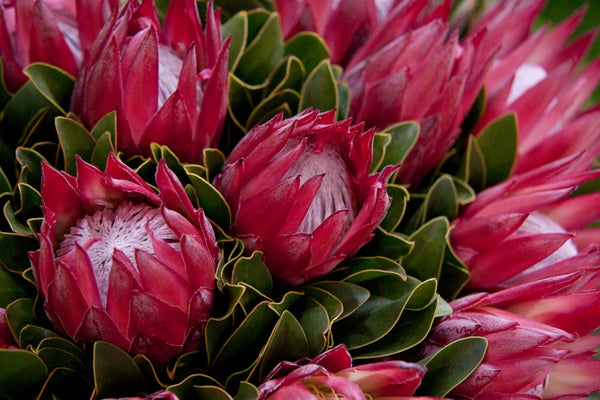
Nature’s treasure trove is brimming with unique and remarkable species, each harboring a distinct charm. Among the botanical gems that grace our planet, the Protea flower stands out for its captivating beauty and rarity. Native to the southern hemisphere, particularly South Africa and Australia, Proteas have captured the hearts of botanists, horticulturists, and flower enthusiasts alike. In this blog, we embark on a journey to explore the mesmerizing beauty and exceptional rarity of the Protea flower.
I. A Brief Introduction to Protea

Protea, belonging to the Proteaceae family, is a diverse genus encompassing around 1,600 species of flowering plants. Named after the Greek god Proteus, known for his ability to change shape, Proteas vary in size, shape, and color, showcasing nature’s remarkable diversity.
A. Protea’s Natural Habitat
Proteas find their home primarily in the southern hemisphere, particularly South Africa, where they are sometimes referred to as “sugarbushes” due to their sweet nectar. Australia is another country with a significant presence of Proteas, and they can also be found in smaller numbers in some parts of South America.
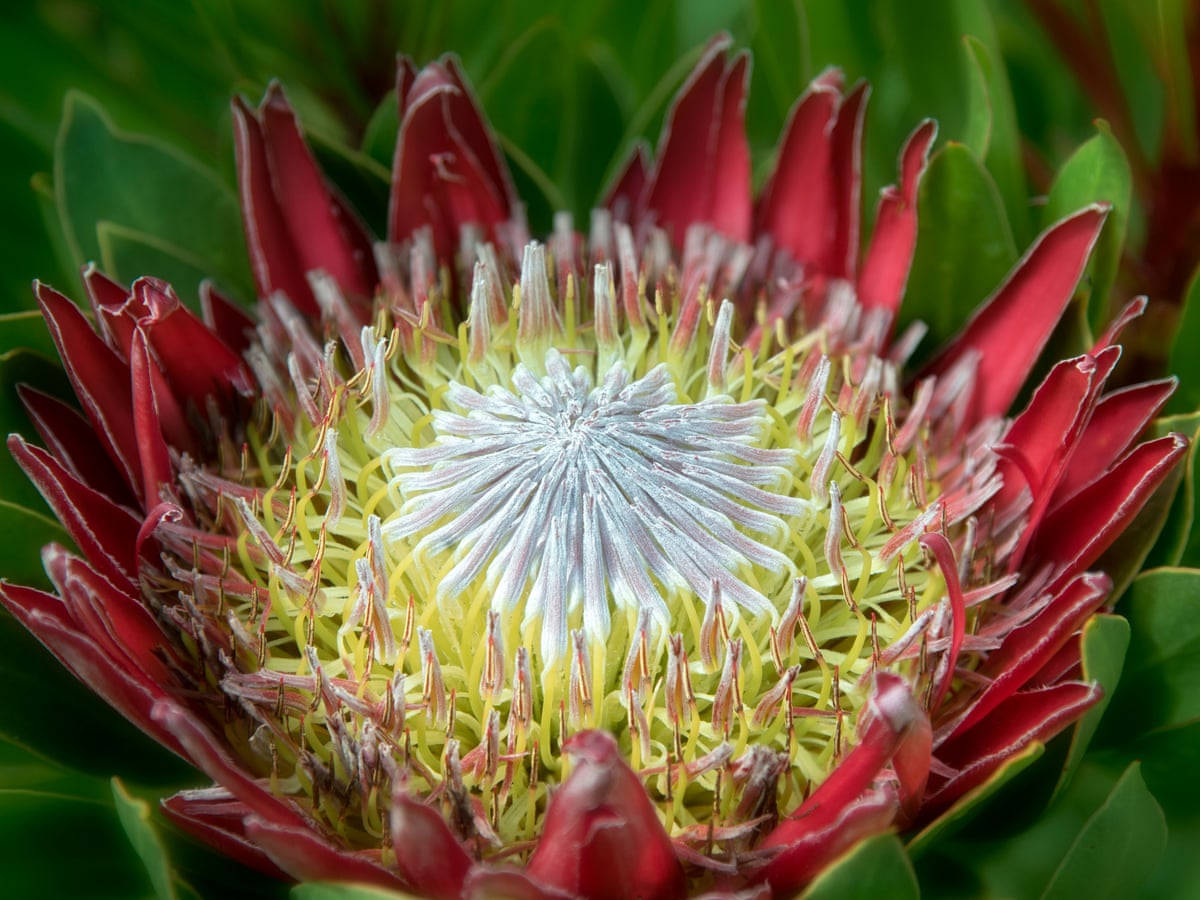
B. Cultural Significance
In South Africa, the Protea has become a symbol of the nation’s natural beauty and resilience, serving as the national flower and emblem. Its associations with courage and diversity make it a fitting representation of the country’s people and landscape.
II. The Remarkable Beauty of Protea
The Protea’s striking beauty has made it a sought-after flower for various purposes, from floral arrangements to botanical research.
A. Unique Flower Structure
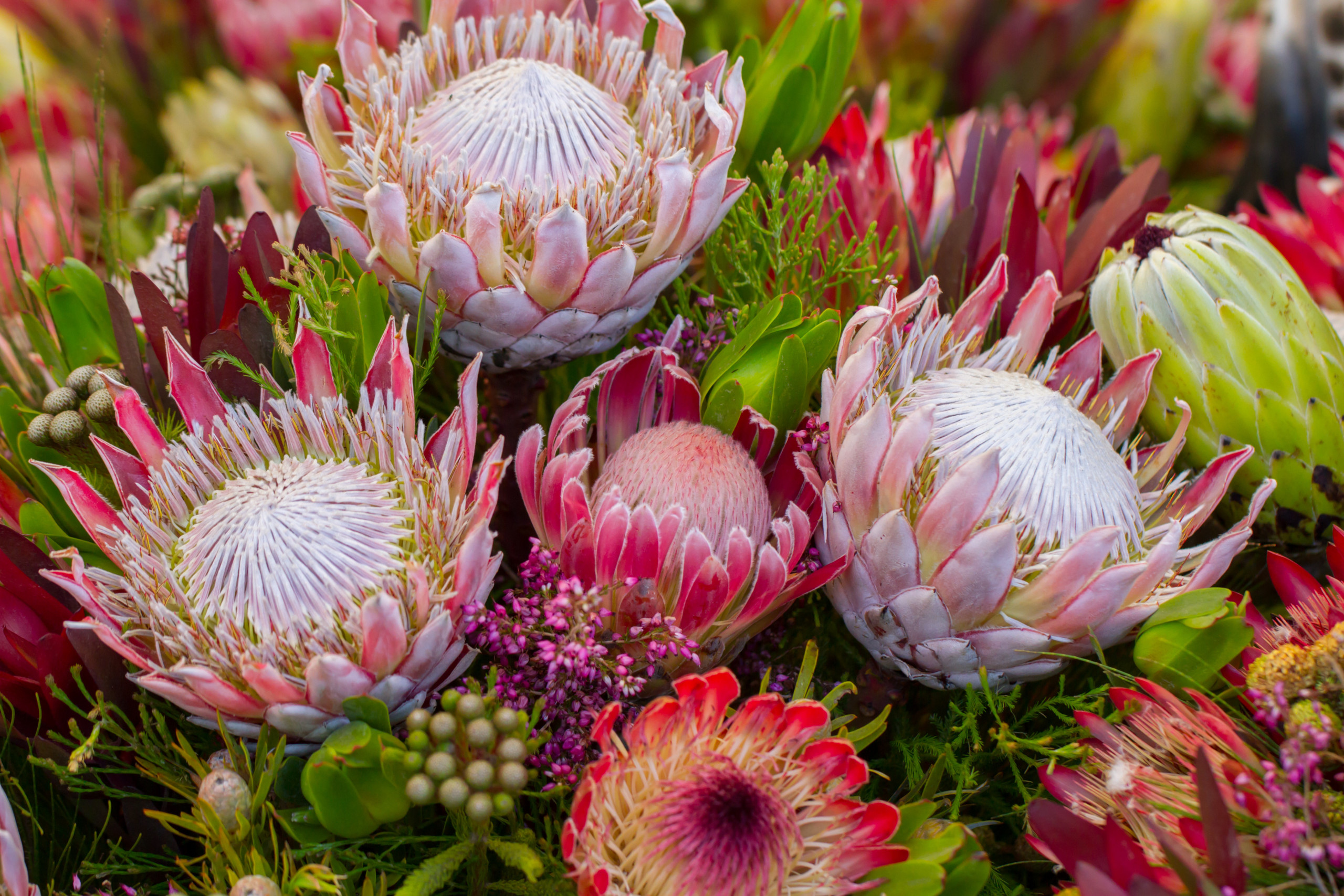
Proteas are instantly recognizable due to their unique flower structure. Their large, eye-catching flower heads consist of a central, rounded mass of tightly packed, small flowers, surrounded by colorful bracts (modified leaves). The bracts are often vivid and variegated, with hues ranging from soft pink and deep red to golden yellow and even shades of green and silvery-white.
B. Diverse Colors
Protea’s color spectrum is a testament to its captivating beauty. Species like the King Protea (Protea cynaroides) are known for their bold, striking pink and red tones, while the Pink Mink Protea (Protea neriifolia) displays a more delicate blush. The White Sugarbush (Protea leucadendron) is adorned with elegant white bracts, and the Banksia Protea (Banksia) species boast various shades, from sunny yellows to fiery oranges.
C. Varied Shapes and Sizes
Proteas offer a wide array of shapes and sizes, ensuring there’s a perfect fit for any garden or bouquet. Some Proteas, like the King Protea, can grow into substantial, majestic shrubs with flower heads up to 12 inches in diameter, while others, like the Pixie Mops (Protea nana), are petite and compact, ideal for smaller spaces.
III. The Rarity of Protea
Proteas are not just beautiful; they are also rare, which adds to their allure. Here are some factors contributing to their scarcity.
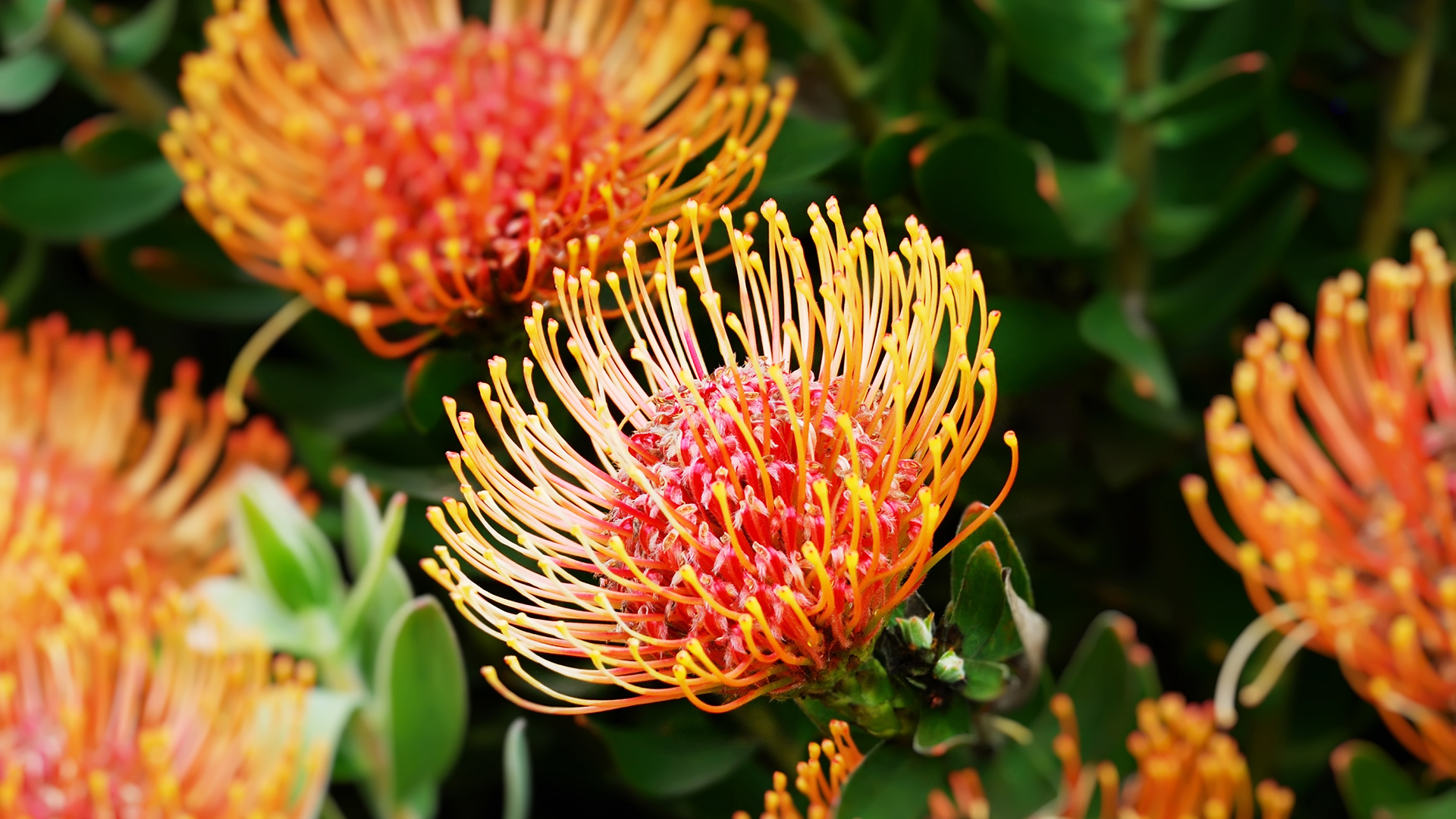
A. Endemism
Endemism, the quality of being found only in a specific geographic region, is one of the primary reasons for Protea’s rarity. Many Protea species are confined to particular areas or ecosystems within South Africa or Australia. This limited distribution makes them susceptible to habitat loss and ecological changes.
B. Threats and Conservation Efforts
Proteas face threats from habitat destruction, invasive species, and climate change. Conservation efforts, such as protected areas and habitat restoration, are in place to safeguard these unique plants. Some Protea species are listed as vulnerable or endangered, emphasizing the need for preservation.
IV. Popular Protea Varieties
As Proteas have captured the hearts of flower enthusiasts, many popular and stunning varieties have gained recognition and admiration.
A. King Protea (Protea cynaroides)
The King Protea is the largest and most iconic Protea species, known for its massive, globe-like flower heads that can measure up to 12 inches in diameter. Its rich pink and red bracts make it a show-stopping centerpiece in floral arrangements.
B. Pink Mink Protea (Protea neriifolia)
The Pink Mink Protea is a delicate beauty with soft pink bracts resembling fluffy mink fur. It is a favorite in bouquets and is cherished for its ethereal, feminine appearance.
C. Banksia Protea (Banksia spp.)
The Banksia genus, closely related to Protea, is famous for its unique, cylindrical flower spikes and vibrant colors. These Australian natives come in various shades, including fiery red, sunny yellow, and rich orange.
D. White Sugarbush (Protea leucadendron)
The White Sugarbush is a stunning Protea variety with pristine white bracts that create a dramatic contrast against its dark, leathery leaves. Its elegance and simplicity make it a sought-after choice for weddings and special occasions.
V. Protea in Art and Culture
The Protea flower has transcended its natural habitat and become a symbol of beauty, strength, and resilience in various cultures and art forms.
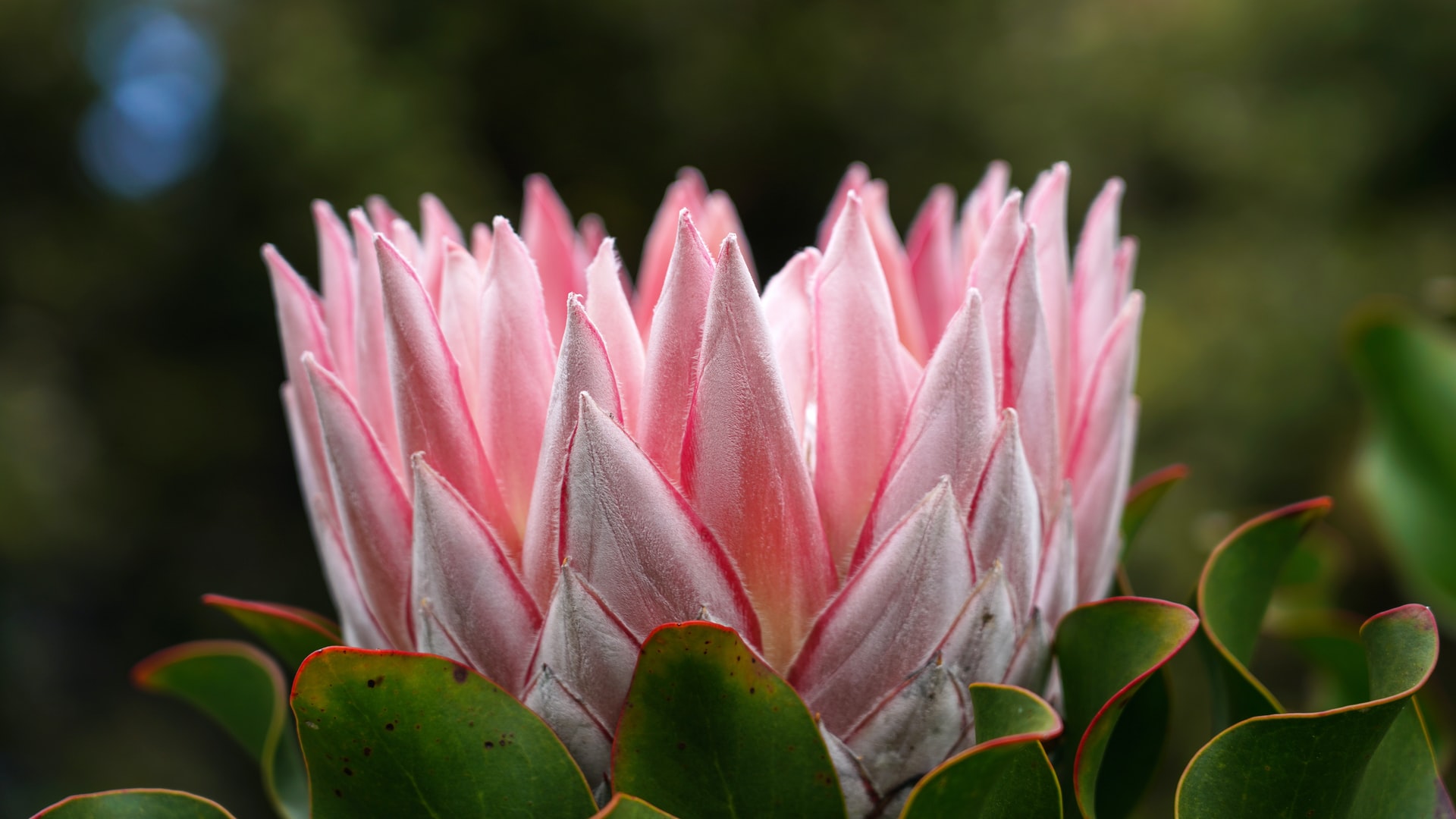
A. South African National Symbol
In South Africa, the Protea holds a significant cultural and national importance. As the country’s national flower and emblem, it is featured on the national coat of arms, official seals, and military insignia. Its role as a symbol of unity and diversity highlights its cultural significance.
B. Floral Design and Arrangements
Proteas have become an integral part of the floral industry, gracing bouquets, weddings, and other celebrations. Their unique structure and vibrant colors make them a favorite choice for florists and designers aiming to create unforgettable arrangements.
C. Botanical Illustration
Botanical illustrators have long been captivated by the intricate details and beauty of Protea flowers. These exquisite illustrations serve not only as artistic pieces but also as valuable references for researchers and botanists.
VI. Growing and Caring for Protea
Cultivating Proteas can be a rewarding endeavor, but it requires specific knowledge and care due to their unique needs.
A. Climate and Environment
Proteas thrive in Mediterranean climates with mild, wet winters and hot, dry summers. They are adapted to well-drained, acidic soils. If you don’t have a Mediterranean climate, consider growing Proteas in containers that can be moved indoors during harsh weather.
B. Soil and Fertilization
Well-draining, acidic soil is essential for Proteas. You can amend your soil with sand and organic matter to improve drainage. Fertilize with a low-phosphorus, slow-release fertilizer formulated for acid-loving plants.
C. Pruning and Maintenance
Regular pruning is necessary to maintain the health and shape of your Protea plants. Remove dead or diseased branches and faded flowers to encourage new growth.
D. Watering
Proteas prefer infrequent, deep watering rather than frequent shallow watering. It’s crucial to avoid overwatering, as these plants are sensitive to root rot.
E. Pests and Diseases
Monitor your Proteas for common pests like scale insects and aphids. Prevent fungal diseases by providing good air circulation and avoiding overhead watering.
VII. Protea and Biodiversity
Proteas play an essential ecological role in their natural habitats, providing sustenance for a variety of wildlife.
A. Nectar for Pollinators
The sweet nectar of Protea flowers attracts a host of pollinators, including birds and insects. Sunbirds, sugarbirds, and even insects like beetles play a vital role in cross-pollinating these plants.
B. Habitat for Wildlife
Protea-dominated landscapes serve as habitats for a variety of wildlife. Many animals, including small mammals and birds, find shelter and food in these unique ecosystems.
VIII. Protea Conservation
Given the rarity and ecological importance of Proteas, conservation efforts are essential to safeguard these remarkable plants.
A. Protected Areas
Many Protea species’ natural habitats are within protected areas or reserves, helping to mitigate habitat loss due to urbanization and agriculture.
B. Ex Situ Conservation
Ex situ conservation involves growing and maintaining Protea species in botanical gardens and seed banks, providing a safeguard against extinction and allowing for research and potential reintroduction.
C. Public Awareness
Raising public awareness about Protea conservation can help garner support for protecting these remarkable plants and their natural habitats.
IX. The Future of Protea
As global interest in conservation and biodiversity preservation grows, the Protea flower is receiving the attention and care it deserves. Its beauty, rarity, and ecological significance make it a symbol of the delicate balance of nature and the need for responsible stewardship.
The Protea flower is a testament to nature’s artistry, showcasing an incredible range of colors, shapes, and sizes. Its rarity and cultural significance have made it a cherished botanical gem, and its role in the ecosystem underscores the delicate web of life. As we continue to appreciate and protect the Protea, we celebrate the wonders of the natural world and our responsibility to safeguard its treasures for generations to come.